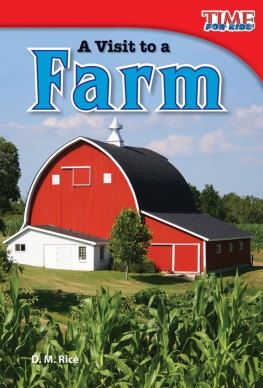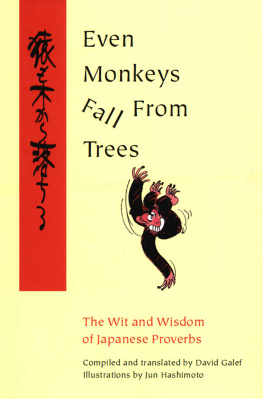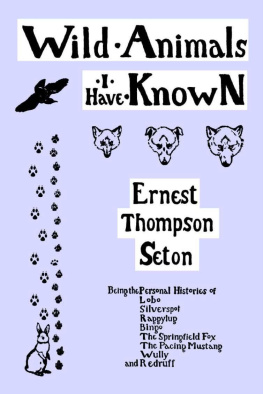UNITED STATES DEPARTMENT OF AGRICULTURE
FARMERS' BULLETIN
Washington, D. C. 702 January 17, 1916
Contribution from the Bureau of Biological Survey, Henry W. Henshaw, Chief.
COTTONTAIL RABBITS IN RELATION TO TREES AND FARM CROPS.
By D. E. Lantz , Assistant Biologist.
CONTENTS.
Page.
Introduction
Habits of cottontail rabbits
Protection of rabbits
Means of repressing rabbits
Natural enemies
Hunting
Trapping
Poisoning
Bacterial diseases
Protection of crops from rabbits
Rabbit-proof fences
Tree protection
Washes
Mechanical contrivances
Other means
Note. This bulletin discusses the distribution and habits of cottontail rabbits and methods of controlling their ravages on trees and cultivated crops by means of trapping, poisoning, and supplying safeguards. For general distribution.
INTRODUCTION.
Among the serious pests in orchards and tree plantations are the several native species of rabbits. These animals do considerable damage to garden truck and other farm crops also, especially on lands recently opened to cultivation. North American rabbits belong to two general classes easily distinguished by their size and habits.
The larger forms include the arctic and varying hares, or snowshoe rabbits, and the jack rabbits, and are found throughout nearly all of Alaska and Canada and in all the States west of the Mississippi except Arkansas and Louisiana. East of the Mississippi they inhabit the northern parts of Minnesota, Wisconsin, and Michigan, most of New York and New England, and southward in the Appalachian Mountains, parts of Pennsylvania, Maryland, and Virginia.
Genus Lepus.
The smaller forms, generally called "cottontail rabbits," occur in every State, but are absent from the greater part of Maine, the northern parts of New Hampshire, Vermont, New York, Michigan, Wisconsin, and Minnesota, and from the western parts of Washington and Oregon. In recent years they have extended their range northward in the New England States, New York, and portions of the West, and have invaded and occupied a considerable part of the Province of Ontario. In habits they differ materially from the larger rabbits. They live in copses and thickets more than in open fields. The young are born blind, naked, and helpless, while those of the larger rabbits have the eyes open, are partially furred, and active when born.
Genus Sylvilagus.
Rabbits of both genera, however, feed exclusively on vegetation, and are at times harmful to crops and especially to trees. Because of their size and great abundance in parts of their range, jack rabbits are by far the most destructive, but, except in a few places where they have been introduced, none are found east of the Mississippi. Epizootics (diseases which attack many animals at the same time) are an effectual natural check, and after such attack occurs, jack rabbits are usually so reduced in numbers that they are not troublesome again for several years.
Traps and other devices that are effective with cottontail rabbits do not always succeed with jack rabbits. The recommendations contained in this bulletin will, therefore, apply only to cottontail rabbits, but they may suggest methods that, with modifications, may be used against the larger forms.
HABITS OF COTTONTAIL RABBITS.
Cottontail rabbits (fig. 1) are so well known that little need be said of their habits. They breed several times each year during the warmer months, the litters averaging five or six young. The nest is usually placed in a hollow or depression of the ground, often in open fields or meadows. It is composed of dead grass and warmly lined with fur which the female pulls from her own body. The male rabbit takes no part in caring for the young, and the female weans them as soon as they are able to leave the nest. These animals breed so rapidly that in spite of many natural enemies, and of the fact that they are hunted for human food, they often become numerous enough to inflict serious losses on farmers and fruit growers in many parts of the United States (fig. 2).
Cottontail rabbits eat all sorts of herbageleaves, stems, flowers, and seeds of herbaceous plants and grassesand leaves, buds, bark, and fruits of woody plants or trees. They usually prefer the most succulent foods, as young shoots, tender garden vegetables, clover, alfalfa, and fallen ripe fruits; but they exhibit also a remarkable delicacy of taste in their selection of certain varieties of cultivated plants and in their neglect of others of the same species. Prof. C. V. Piper reports that in Oregon rabbits ate Arabian alfalfa down to the ground, while they did little or no damage to other varieties grown in surrounding plats. Prof. C. A. Mooers, of the Tennessee Agricultural Experiment Station, reports similar observations in regard to their taste for soy beans, stating that they greatly relish the mammoth yellow variety and that it is practically the only one that suffers from their depredations. When favorite foods are absent rabbits resort to whatever is available. It is during summer droughts or when deep snows cut off ordinary supplies that the animals attack the bark of growing trees or shrubs.
Fig. 1.Cottontail rabbit in its "form." Fig. 1.Cottontail rabbit in its "form."
PROTECTION OF RABBITS.
Cottontail rabbits are valuable for food and afford excellent sport for gunners. In many States, especially east of the Mississippi River, they are protected as game. In fruit-growing and truck-farming districts farmers regard them with disfavor, and there is considerable rivalry between sportsmen and farmers to have their opposing views reflected in game laws. The interests of the two classes do not seriously differ, however, for when rabbits are closely hunted losses from their depredations are usually reduced to a minimum. Still there is danger that in years favorable for their increase the animals may inflict serious injury to trees during severe winters.
Rabbits are protected (1915) by close seasons in States and Provinces as shown in Table I. Twenty-eight States, Alaska, and the Canadian Provinces not mentioned in the table do not protect rabbits of any kind. In the District of Columbia all shooting is prohibited except on certain river marshes. In Kentucky rabbits may be taken with dog, trap, or snare at any time, and the close season for shooting is evidently solely for the purpose of keeping gunners out of fields and woods during the two months immediately preceding the open season for quails. In Wisconsin 46 counties, mostly in the southern half of the State, have no close season for rabbits. In California only cottontails, or bush rabbits, are protected.
Fig. 2.Apple tree killed by rabbits. Fig. 2.Apple tree killed by rabbits.
Table I. Lengths of open season for rabbits or hares.
| State or Province. | Beginning of open season. | Beginning of close season. | Length of open season. |
| Maine | Oct. 1 | Apr. 1 | 6 |
| New Hampshire | do. | Mar. 1 | 5 |
| Vermont | Sept. 15 | do. | 5-1/2 |
| Massachusetts | Oct. 12 | do. | 4-3/5 |
| Rhode Island | Nov. 1 | Jan. 1 | 2 |
| Connecticut | Oct. 8 | do. | 2-3/4 |











